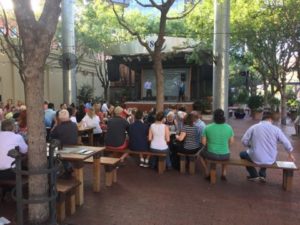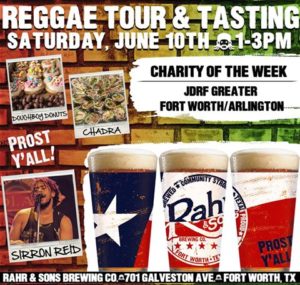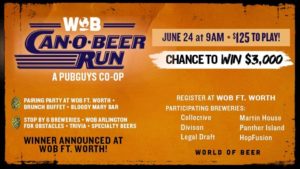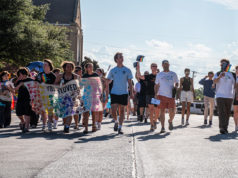Last February, I wrote about a new TCU course called The Geography of Beer. Dr. Sean Crotty led the class, which will be offered again this fall. The topic has proven popular, and Crotty was recently invited to speak at The Fort Worth Museum of Science and History’s monthly series PUBlic Knowledge. (Read carefully. There will be a quiz at the end.)
Beer 101
From Crotty: Beer has four principal ingredients: hops, malted barley, yeast, and water. The Germans took their allegiance to these ingredients so seriously that they encoded them in a brewing law called the Reinheitsgebot. They hadn’t discovered yeast yet. Later on, they adapted the law to include yeast and things like wheat. Hans Pils is a good example of a local beer that would pass the Reinheitsgebot. Germany is the source of many of the beer styles that are popular today.
Beer by Country
The Czech Republic invented the pilsner and has the highest rate of beer consumption in the world. Around the world, the most popular brews are some type of light-colored beer. The U.K. is connected with bitters, porters, and pale ales. The most popular beer in the U.K. is still a light pilsner. Belgians are known for developing pale ales (later adopted by the U.K), Trappist ales, and sours (lambics). In the United States, we can thank German immigrants for the popularity of lagers.
Ancient History
It is interesting how uniform the desire to have access to alcohol was across the entire world. We have archeological evidence of alcohol being produced long ago in South America, the Fertile Crescent, Africa, and Asia, with some efforts dating back as far as 7,000 B.C. When people figured out they could ferment sugar, they stuck around in those locations to continue doing it. Civilization is closely connected to the discovery of alcohol. As a geographer, I find those connections interesting. The two oldest examples of alcohol production occurred around the same time in the Middle East and China. The question is: Did they discover this independently and develop the skills to make the drinks on their own, or were they already communicating.
The Paleolithic Theory states that during the Paleolithic Era, hunter-gatherers accidently made alcohol by collecting grapes and not eating them quickly enough. The grapes germinated and, when consumed on a large enough scale, possibly got our ancestors drunk.
Prohibition’s Long Shadow
Prohibition was partly the result of historically high levels of alcohol consumption early in the 20th century. People were drinking a lot, mostly spirits. Prohibition actually lowered the cost of alcohol by removing taxes. One of the main reasons it was repealed in 1933 was because the government needed the revenue. At the time, ice sales kept the big brewers in business. They were able to make money off the ice houses they had established. Following Prohibition, the country saw a pattern of brewery consolidation, which reached its most extreme levels in the late 1970s when there were only 89 U.S. breweries. We see Prohibition’s legacy with the Blue Laws that still regulate alcohol. The temperance movement was largely led by Baptists in the southeast, and that region tends to regulate alcohol more than other parts of the United States even today.
The Craft Beer Movement and Its Current Growth
Brewery consolidation peaked in the late 1970s when Charlie Papazian wrote the Joy of Homebrewing. Almost every microbrewery started with someone making beer on their stove. Today, there 6,245 breweries or brewpubs in the United States. The beer market is flattening out. On a per capita basis, we’re drinking less beer while wine consumption has increased steadily since the 1990s. Smaller craft breweries are making up the entirely of the recent growth.
Large beer corporations like AB-InBev are now looking to increase market share in emerging economies. There are now 500 million people in China who can afford to buy beer. Brazil is another area of growth for beer. As of last year, Snow Beer in China became the most consumed beer in the world. It is not available in the United States. AB-Inbev owns nearly 16 percent of China’s beer market. AB-Inbev will pay as much as $10,000 a month in Shanghai (something that would be illegal in the United States) to keep their beers on tap.
Geography of Beer Quiz
1.) How many principal ingredients are there in beer and what are they?
2.) The Germans took their allegiance to these ingredients so seriously that they encoded them in which brewing law?
3.) Which popular beer from Blanco-based Real Ale Brewing Company would likely conform to strict German brewing guidelines?
4.) Which two regions of the world were producing alcohol around 7,000 B.C.?
5.) Blue Laws regulating alcohol consumption are a relic of the federal government’s effort to ban alcohol production known as what?
6.) While beer consumption has flattened out in the United States, which adult beverage has seen steady growth over the past 25 years?
7.) Which popular book is credited with helping start the craft beer movement?
8.) Which Asian country has one of the fastest growing beer markets?
Don’t forget to follow On Tap in Fort Worth’s Facebook page.
On Tap this Week:
Rahr & Sons Reggae Tour and Tasting
From Rahr: Join us for our Reggae Tour & Tasting tomorrow from 1-3pm! Dough Boy Donuts and Chadra Mezza and Grill will be here to feed your bellies. Sirron Reid will be up on the Rahr stage! We will be handing out Texas pints (while supplies last).
WOB Can-O-Beer
From World of Beer: WOB Can-O-Beer run starts at World of Beer Fort Worth 9am. We will host a pairing party that includes a brunch buffet, Bloody Mary Bar, t-shirt, scorecard, and assignments to a bus. All participants or teams of will be assigned to a bus. Busses will visit one of six breweries where each team will be challenged with an obstacle, trivia, and served a specialty beer from each of the six breweries (Collective, Division, Legal Draft, Martin House, Panther Island, Hop Fusion). Once all of the teams have completed the tasks they will then be rallied back to the busses and on to the next location to complete new obstacles, trivia, and beers. Somewhere in the transit to the six breweries two craft beer taverns that will be visited. World of Beer Arlington and Dr Jekyll’s will offer food and beer. Once all the locations have been visited, we will then report back to Fort Worth World of Beer where we will tally the scores and announce the winning team at 8:30pm! The winning team will receive a keg trophy to be displayed at WOB Ft Worth and $3,000 cash. June 24.
















That’s my son!